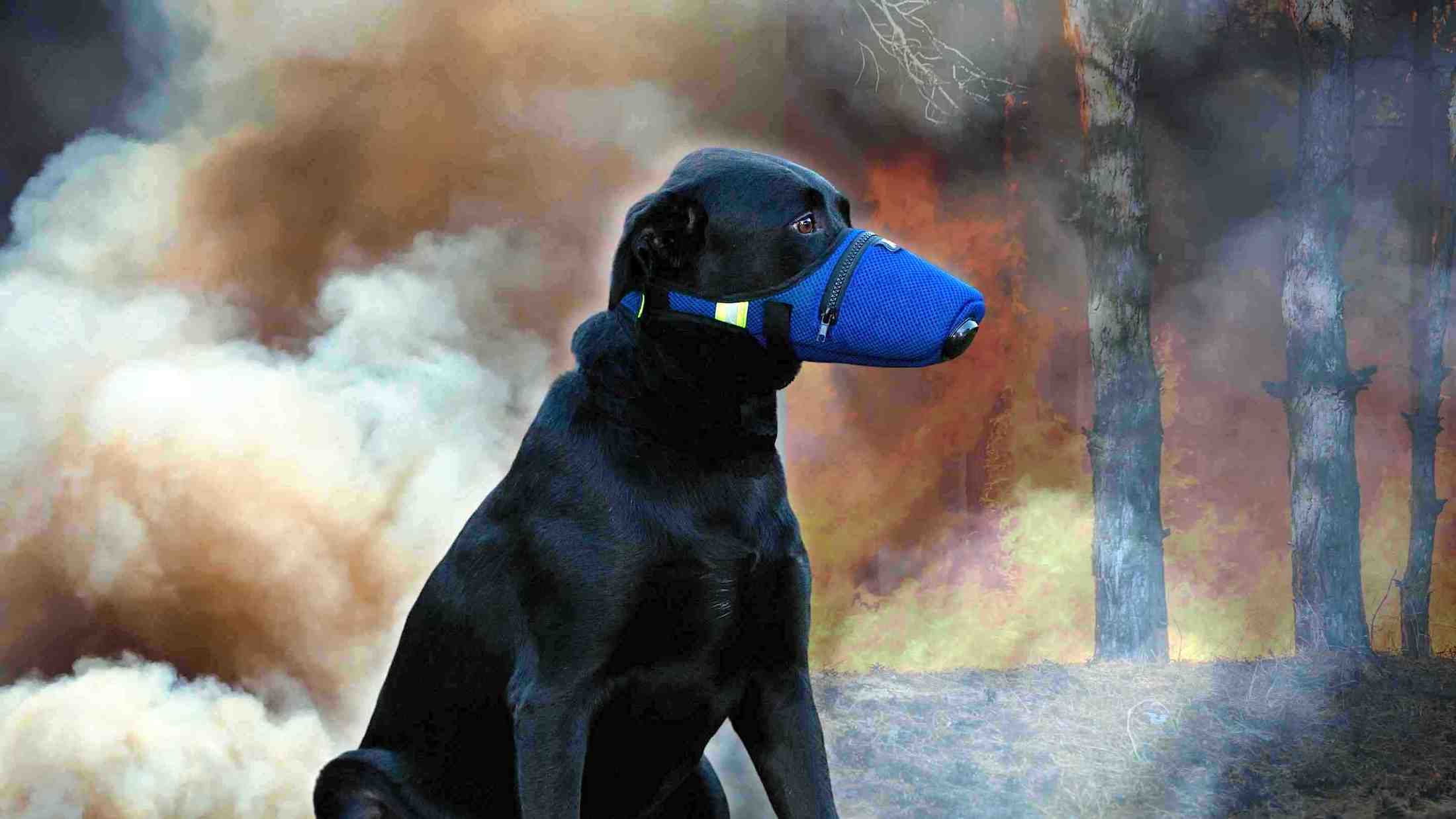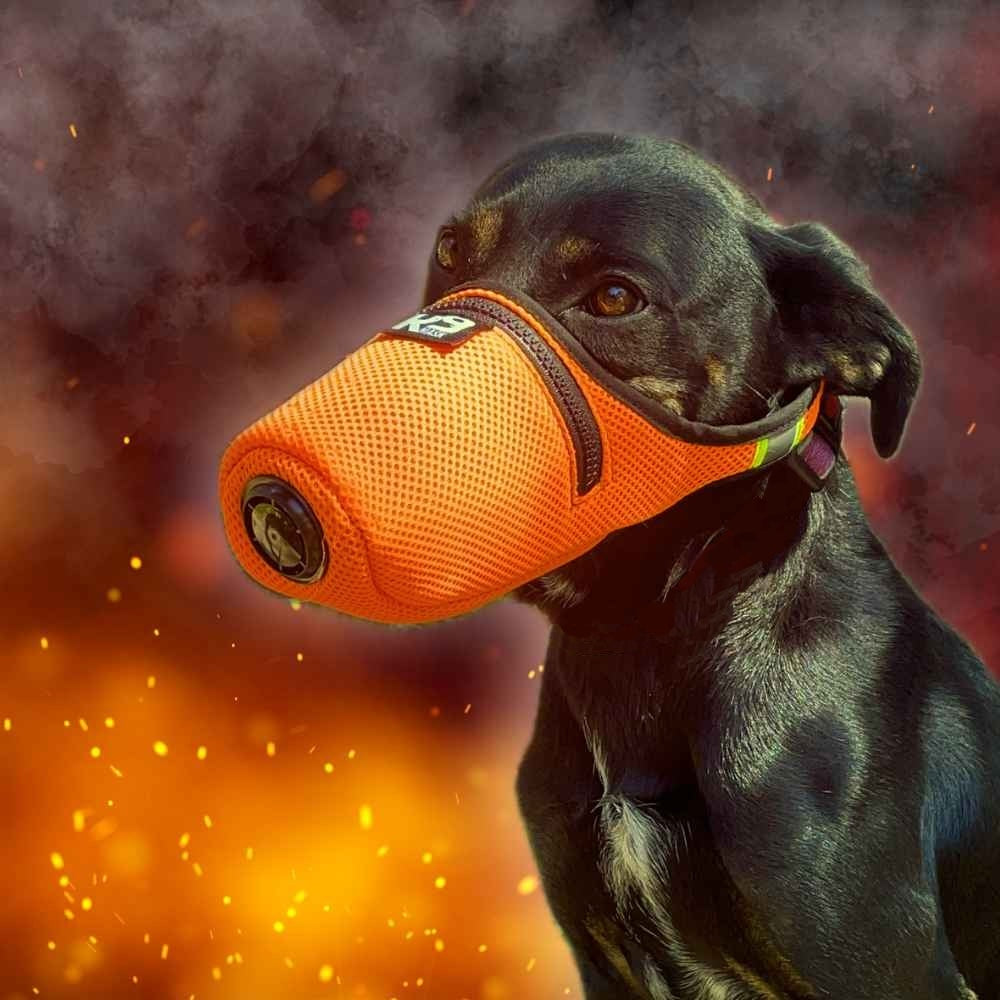Pets in the Southwest desert areas of California, Arizona, and New Mexico have an annual health problem after the spring rains. Valley fever is one of those worries. The fungus that causes Valley Fever is very prevalent in Arizona’s desert landscape, especially during the wetter months.
Rain makes the fungus grow within the soil, and the tiny spores become airborne when disturbed by winds, construction, or digging. If the spores are inhaled, there is a chance that they can infect the lungs and make your dog sick.
Valley Fever Fungal Disease
Valley Fever is a fungal disease that is endemic in the desert Southwest. It’s caused by the fungal spores Coccidioidomycosis that live in the desert soil. It is common for the spores to be disrupted and aerosolized in the summer during monsoon season.

The valley had a somewhat dry but dusty monsoon season that puts the valley residents and pets at a possibly higher risk this year for contracting Valley Fever. The spores are breathed into the lungs and then after weeks to months symptoms may begin. Some pets clear out the spores before ever becoming ill, but others can become very sick.

Dogs Have Highest Health Risk
Dogs comprise the majority of Valley Fever cases in animals. However, other animals can get the disease as well. Cats, llamas, non-human primates, horses, zoo animals, and even wild animals have been reported with Valley fever, according to University of Arizona researchers. The researchers say approximately 6-10% of dogs living in Pima, Pinal, and Maricopa counties in Arizona will become sick with Valley fever each year.
Signs of Valley Fever include a harsh dry cough, a fever, a lack of appetite, and lethargy or depression. These signs usually occur around 3 weeks after infection, but sometimes the disease can be dormant in the body for years before the symptoms occur. Usually, in these cases, the fungus has spread to different parts of the body, which can impact their bones and joints. Symptoms can include lameness and swelling of the joints.

The most common early symptoms of primary pulmonary Valley Fever in dogs are:
- coughing
- fever
- weight loss
- lack of appetite
- lack of energy
Some or all of these symptoms may be present as a result of infection in the lungs. As the infection progresses, dogs can develop pneumonia that is visible on x-rays. Sometimes the coughing is caused by pressure of swollen lymph nodes near the heart pressing on the dog's windpipe and irritating it. These dogs often have a dry, hacking or honking kind of cough and the swollen lymph nodes can be seen on x-rays.
When the infection spreads outside the lungs, it causes disseminated disease. The most common symptom of disseminated disease in dogs is lameness; the fungus has a predilection for infecting bones of the legs in dogs. However, Valley Fever can occur in almost any organ of dogs. Signs of disseminated Valley Fever can include:
- lameness or swelling of limbs
- back or neck pain, with or without weakness/paralysis
- seizures and other manifestations of brain swelling
- soft abscess-like swelling under the skin
- swollen lymph nodes under the chin, in front of the shoulder blades, or behind the stifles
- non-healing skin ulcerations or draining tracts that ooze fluid
- eye inflammation with pain or cloudiness
- unexpected heart failure in a young dog
- swollen testicles
Sometimes a dog will not have any signs of a primary infection in the lungs, such as coughing, but will only develop symptoms of disseminated disease, e.g., lameness, seizures. Very few of the signs of Valley Fever are specific to this disease alone and your veterinarian will do tests to determine that your dog's illness is Valley Fever and to rule out other causes.

Valley Fever is not contagious from dog to dog, or dog to human, but if one dog in your household has Valley Fever, it’s likely that your other dogs have been exposed. Cats can get Valley Fever also, but it’s much more difficult for cats to get it, and usually they only contract it in skin sores from the soil. Outdoor cats are at higher risk of contracting the infection.
If you have any concern your dog might have Valley Fever, schedule an appointment right away for a physical exam and to discuss testing.
Treatment Options for Dogs
In most cases, a dog ill enough from Valley Fever to be seen by a veterinarian will require treatment with anti-fungal medication.
- Courses of medication are usually extensive, averaging 6-12 months.
- Dogs with disseminated disease in bones, skin, or internal organs usually require longer courses of medication.
- Central nervous system (brain or spinal cord) involvement frequently requires lifetime treatment with medication to keep symptoms from recurring.
Oral anti-fungal medication in the form of twice daily pills or capsules is the usual treatment for Valley Fever.
Living in the valley is automatically a risk for contracting Valley Fever, but there are some things you can do to help your dog not pick it up. Bring them inside during a dust storm and keep them healthy by feeding good quality food and visiting the veterinarian regularly. A healthy pet will have a healthier immune system and may be more likely to fight off the disease.
Here are some precautions pet owners can taker to protect their four-legged friends:
- Avoiding long durations outside or walks with your pet during windy weather or in a dust storm.
- Keep windows closed during windy weather to avoid spores entering your home.
- Prevent your pet from digging and playing in dirt, especially if it has rained recently.
- Yard ground cover that reduces dust is helpful, including grass and deep gravel or other dust-controlling cover.
- Consider an air filter face mask by K9 Mask® for your dog.
A vaccine is currently under development that could prevent Valley Fever or make it only a very mild illness in dogs.
And right now researchers at University Arizona's Valley Fever Center for Excellence are looking for dog owners that may be interested in participating in a study of the canine Valley Fever vaccine when it becomes available to community dogs.














